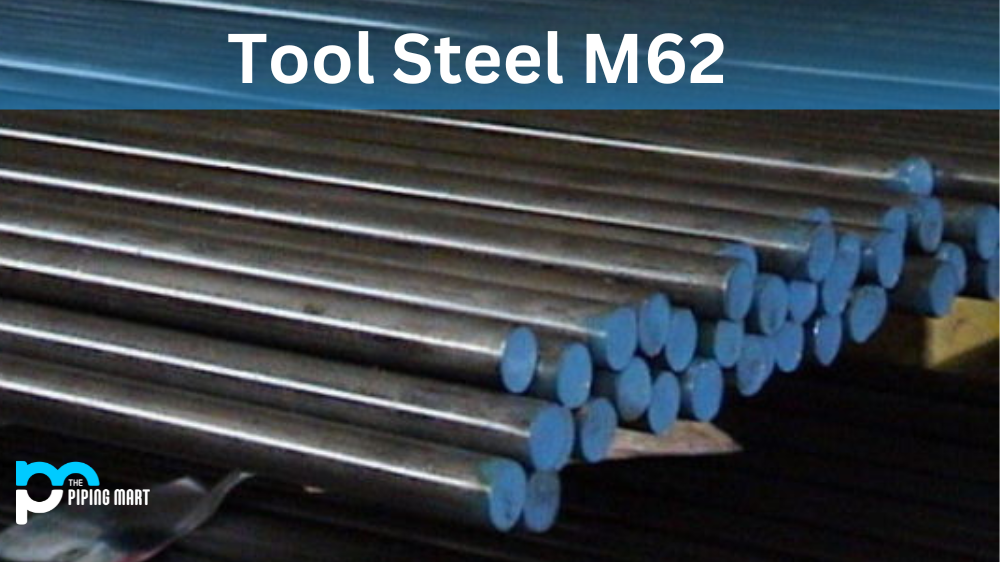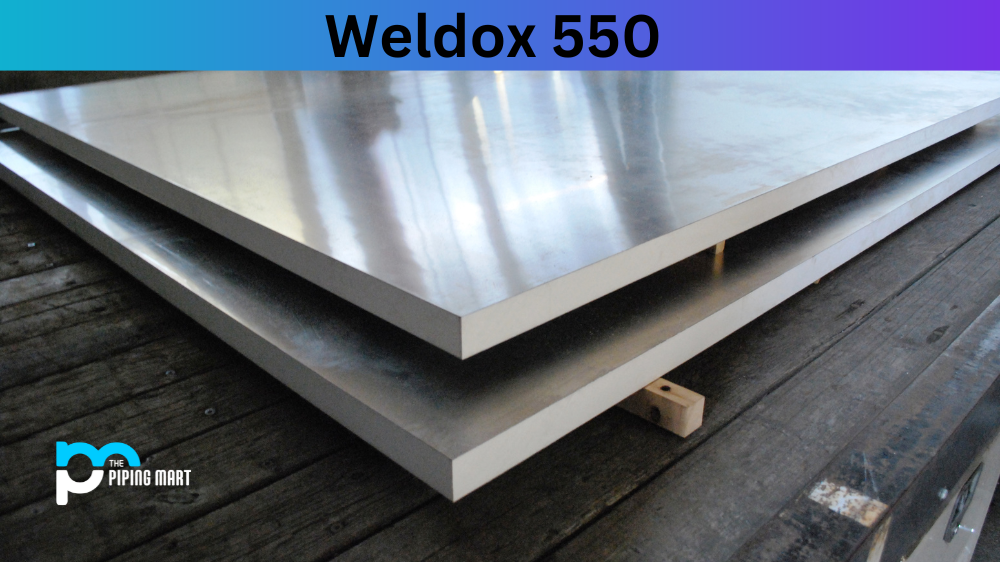Tool steel M62 is a high-speed steel often used to produce machine parts and tools. It has a good combination of abrasion resistance, toughness, and wear resistance, making it ideal for many applications. In this article, we’ll look at the composition and properties of tool steel M62, its uses, corrosion resistance and heat treatment procedures.
Tool Steel M62 Composition
M62 HSS comprises 1.49% carbon, 4% chromium, 5% vanadium, 0.8% tungsten, 0.45% molybdenum, 0.2-0.3% silicon and some trace elements such as manganese, sulfur and phosphorus. The combination of these elements gives it an excellent balance of wear resistance, toughness and abrasion resistance when properly heat treated.
| C ≤ |
Si ≤ |
Mn ≤ |
P ≤ |
S ≤ |
Cr | Ni |
|---|---|---|---|---|---|---|
| 1.25-1.35 | 0.15-0.4 | 0.15-0.4 | 0.03 | 0.03 | 3.5-4.0 | |
| Mo | Al | W | Nb | Ti | V | Ce |
| 10.0-11.0 | 5.75-6.5 | 1.8-2.1 | ||||
| N | Co | Pb | B | Other | ||
Tool Steel M62 Mechanical Properties
Steel M62 has a hardness range of 55-60 HRC when hardened and up to 40 HRC when tempered, depending on the heat treatment process used during manufacturing or rework operations. It also has excellent wear resistance with a high working temperature tolerance of up to 500 degrees Celsius (932 degrees Fahrenheit).
| Properties | Conditions | ||
|---|---|---|---|
| T (°C) | Treatment | ||
| Density (×1000 kg/m3) | 7.7-8.03 | 25 | |
| Poisson’s Ratio | 0.27-0.30 | 25 | |
| Elastic Modulus (GPa) | 190-210 | 25 | |
| Tensile Strength (Mpa) | 1158 | 25 | oil quenched, fine grained, tempered at 425°C |
| Yield Strength (Mpa) | 1034 | ||
| Elongation (%) | 15 | ||
| Reduction in Area (%) | 53 | ||
| Hardness (HB) | 335 | 25 | oil quenched, fine grained, tempered at 425°C |
Tool Steel M62 Physical Properties
In addition to its mechanical properties mentioned above, M62 high speed steel also has excellent physical properties, which include good thermal conductivity and electrical conductivity as well as low thermal expansion coefficient and good magnetic permeability characteristics, which make it suitable for use in many applications where these kinds of properties are needed such as in electrical contacts and motors or generators where good magnetic permeability is required to reduce energy losses due to eddy current losses or hysteresis losses respectively.
| Quantity | Value | Unit |
|---|---|---|
| Thermal expansion | 16 – 17 | e-6/K |
| Thermal conductivity | 16 – 16 | W/m.K |
| Specific heat | 500 – 500 | J/kg.K |
| Melting temperature | 1370 – 1400 | °C |
| Service temperature | 0 – 500 | °C |
| Density | 8000 – 8000 | kg/m3 |
| Resistivity | 0.7 – 0.7 | Ohm.mm2/m |
Tool Steel M62 Thermal Properties
| Properties | Conditions | ||
|---|---|---|---|
| T (°C) | Treatment | ||
| Thermal Conductivity (W/m-K) | 42.7 | 100 | |
| Specific Heat (J/kg-K) | 477 | 50-100 | |
Tool Steel M62 Uses
This grade of tool steel is commonly used in cutting tools due to its excellent wear resistance characteristics, which makes it ideal for use in machining operations where frequent replacement or sharpening may be necessary due to heavy usage or because the material being cut requires a more durable cutting edge than other materials such as aluminium or brass can provide.
Corrosion Resistance
It also offers excellent corrosion resistance even when exposed to acidic environments making it suitable for use in food processing plants or other areas where corrosive chemicals may be present in either liquid, or gaseous form, as well as areas with high humidity levels such as bathrooms or swimming pools where rusting could occur if less corrosion resistant metals were used instead.
Heat Treatment
To achieve optimal performance from tool steel m62, it should be heat treated correctly using one of two main processes; either annealing which involves heating the material until austenite forms which then allows the material to be cooled slowly while still maintaining its hardness while tempering consists in heating the material until austenite forms but then cooling rapidly, so that martensite forms instead giving it increased strength but at the cost of some flexibility compared with annealed steels which have higher ductility because they have been cooled slowly through their austenitic phase before transforming into martensite during cooling down afterwards.
Machining
Finally, once heat treatment is complete, machining can begin. However, some additional care must be taken when machining this type of material due to its harder nature compared with other grades of tool steel, meaning more force may be required during cutting operations which could lead to increased levels of vibration if not carefully monitored during operation so always ensure you take proper safety precautions when operating machinery involving tool steel m82 no matter what your experience level may be!
Welding
Welding can also be performed successfully on this grade of tool steel. However, special care must be taken when doing so due to its high hardness requiring special welding techniques such as preheating before welding along with slower welding speeds than usual for milder steels; otherwise, cracking can occur during welds leading to weaker weld joints than expected, resulting in potential failure under extreme conditions so always ensure you consult experienced engineers before attempting any welding operations on this type of material!
Conclusion
In conclusion, tool steel m82 is an incredibly versatile grade that has many uses thanks to its combination of wear resistance, toughness, abrasion resistance, corrosion resistance, electrical conductivity, magnetic permeability, low thermal expansion coefficient and suitable heat treatment options all combined, making it ideal for use in many industries including automotive, medical electronics aerospace food processing etc. just make sure you follow any special instructions regarding heat treatment machining welding etc. especially if you are new to working with this type of material! Thanks for reading!

Pipingmart is a B2B portal that specializes in metal, industrial and piping items. Additionally, we share the latest information and information about materials, products and various types of grades to assist businesses that are involved in this business.




